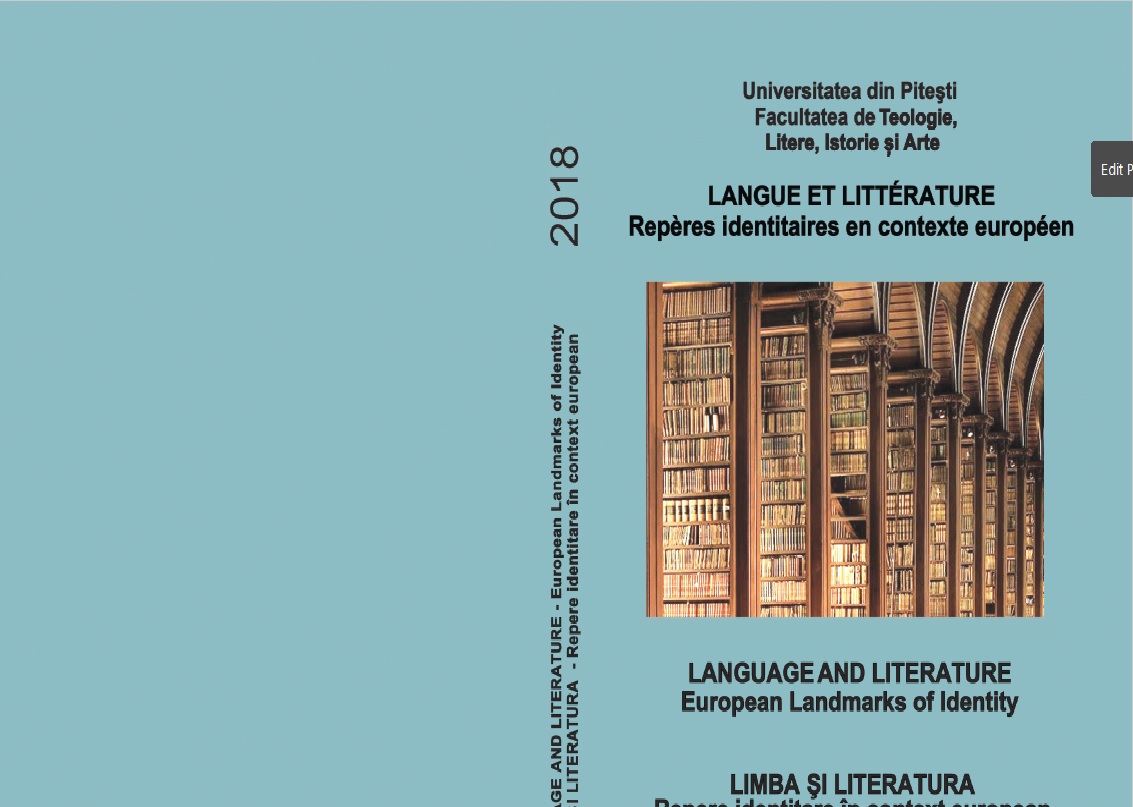IL TEMA : ITALO CALVINO E “LE CITTÀ INVISIBILI”: L’IMMAGINARIO DEL VIVERE E DEL NARRARE
THE THEME: ITALO CALVINO AND "THE INVISIBLE CITIES": THE IMAGINARY OF LIVING AND NARRATING
Author(s): Abdellah MaasoumSubject(s): Language and Literature Studies, Studies of Literature
Published by: Editura Universităţii din Piteşti
Keywords: the city; travel reports; combinatorial period; imaginary of living and narrating;
Summary/Abstract: “What is the city for us today? I think I wrote something like a last love’s poem to cities, when it becomes increasingly difficult to live them as a city”. From a Calvino press conference held in New York in 1983. There are no recognizable cities in the “invisible cities”. They are all invented cities; I called each of them with a woman’s name; the book is made up of short chapters, each of which should offer a starting point for reflection that applies to every city or a city in general.The book was born a piece at a time, at even long intervals, like poems that I put on paper, following the most varied aspirations. I write a series in writing: I keep the most varied folders where I put the pages that I happen to write, according to the ideas that turn my mind, or just notes of things I would like to write. I have a folder for objects, a folder for animals, one for people, a folder for historical characters and another for heroes of mythology; I have a folder on the four seasons and one on the five senses; in one I collect pages about the cities and the landscapes of my life and in another image city, out of space and time. When a folder begins to fill with sheets, I begin to think about the book that I can get out of it. Therefore, I brought this city book in the last few years. How long it took me to imagine only sad cities and for some time only happy cities; there was a period when I compared the cities to the starry sky, and in another period, I always had to talk about the trash that spreads out of the cities every day. It had become a bit like a diary that followed my moods and reflections; everything ended up transformed into images of the city: the books I read, the art exhibitions I visited, the discussions with friends. The “invisible cities” is presented as a series of travel reports that Marco Polo makes to Kublai Ken emperor of the Tartars, Marco Polo who was a lucky Venetian merchant who arrived in China in the thirteenth century, and from there, as ambassador of the Great Ken , he had visited a good part of the Far East. The “invisible cities” are a dream that comes from the heart of invisible cities. Cities are a set of many things: of memory, of desires, of signs of a language; cities are places of exchange, as all the books on economic history explain, but these exchanges are not just exchanges of goods, they are exchanges of words, of desires, of memories. “Invisible cities” was a novel Italo Calvino published in 1972 and is part of the combinatorial period of the author, in which the influence of the semiotics and of structuralism. In the central combinatorial literature, it becomes the reader, who is “playing” with the author, in the search for the hidden interpretive combinations in his work and in language itself. The book consists of nine chapters, but there is a further internal division: each of the 55 cities is divided according to a category (there are 11 in total), from “cities and memory” to “hidden cities”. When it was released in 1972, many as a visionary and imaginary text accepted it. In reality, but it was understood only many years later, it was also a text in its own way realistic: it did not embroider easy utopias or urban dystopias, but it described what the real cities were already becoming. Perhaps, even what had already become. This book is neither the catalogue of an exhibition nor the collection of the proceedings of a conference. Overturning the tradition that wants books related to a cultural “event” documented the already happened, this time it was decided to make a book that anticipates what still needs to happen: almost a set of prepared materials that if on one hand offers a an updated and in-depth view on the relationship between Calvino and the city, and on the influences that the “insatiable cities” have exerted in the most diverse fields (from cinema to architecture), on the other hand also intends to give an account of the reflections and research they have generated the very idea of an exhibition, and that accompanied its design and gestation.
Journal: LIMBA ȘI LITERATURA – REPERE IDENTITARE ÎN CONTEXT EUROPEAN
- Issue Year: 2018
- Issue No: 23
- Page Range: 200-207
- Page Count: 8
- Language: Italian

